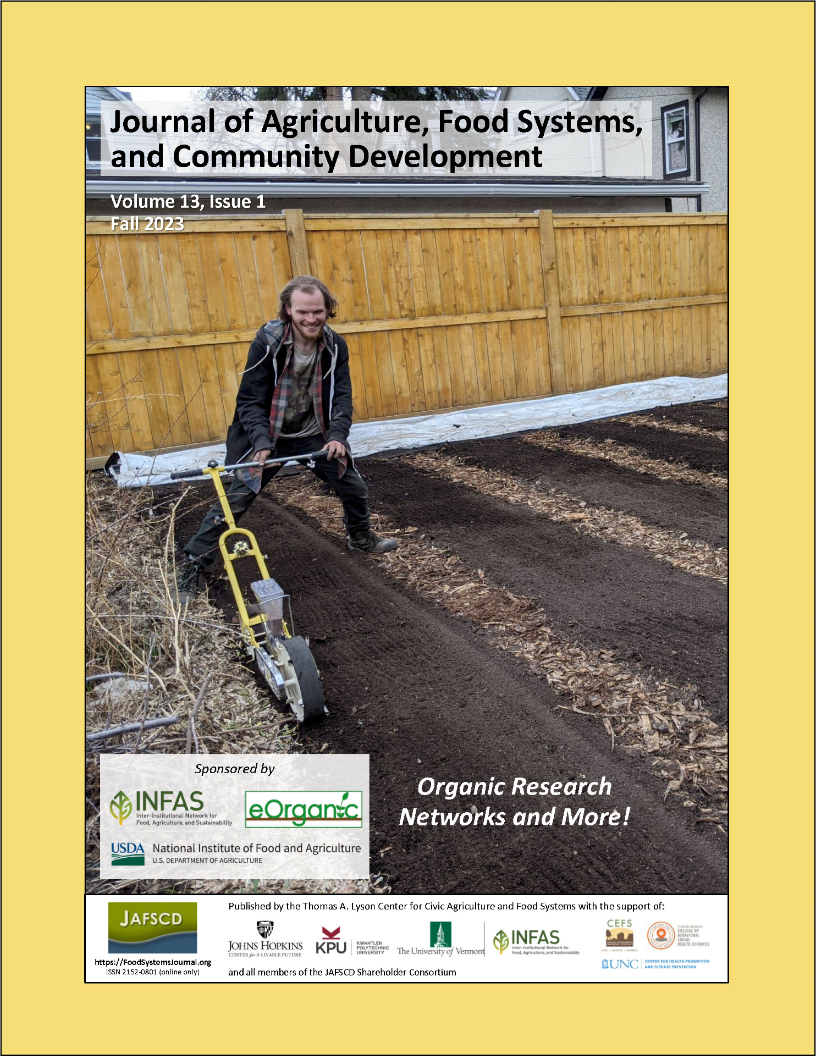Food insecurity in Yukon communities during COVID-19
A qualitative study
DOI:
https://doi.org/10.5304/jafscd.2023.131.015
Keywords:
food insecurity, Northern Canada, Yukon, food bank, COVID-19, pandemic, pandemic response, remote communitiesAbstract
Food insecurity increased in Canada during the COVID-19 pandemic; in the Yukon Territory, the Whitehorse Food Bank saw its scope increase significantly as smaller Yukon communities were requesting deliveries of food while travel restrictions were in place. In this qualitative study, the researchers conducted semi-structured interviews with food bank clients in Whitehorse and two smaller Yukon communities, as well as representatives of other organizations that were involved in community food security initiatives. The results revealed five main themes emerging from shared client experiences and impacts from the pandemic: emphasis on the hamper as core food on an ongoing basis, the importance of traditional foods, food insecurity and access, the role of the Whitehorse Food Bank in supporting informal networks in communities, and ideal food situations that focused on an abundance of fresh and land-based foods. The results show some contrast between needs in Whitehorse and needs in smaller, more remote Yukon communities. Because of limited access to fresh foods in communities outside of Whitehorse, merely increasing income supports would not completely alleviate food insecurity for these participants, who they lack physical access as well as economic access to fresh, preferred foods.
Metrics
Downloads
Published
How to Cite
Issue
Section
Categories
License
Copyright (c) 2023 Sara McPhee-Knowles, David Gatensby

This work is licensed under a Creative Commons Attribution 4.0 International License.
The copyright to all content published in JAFSCD belongs to the author(s). It is licensed as CC BY 4.0. This license determines how you may reprint, copy, distribute, or otherwise share JAFSCD content.













